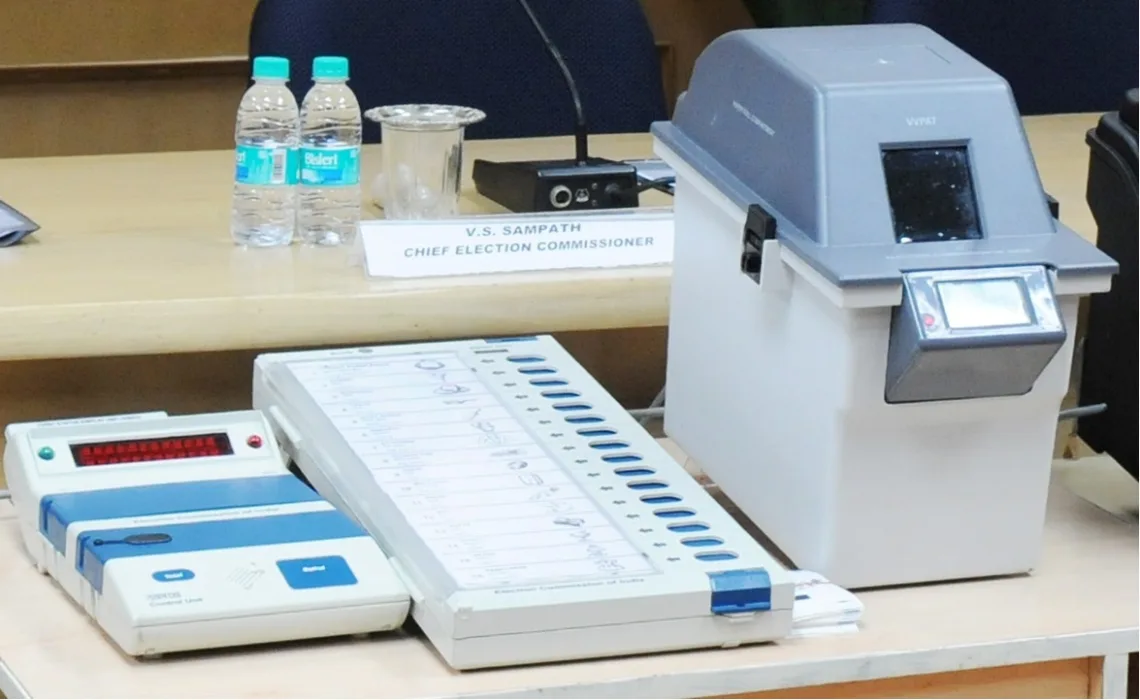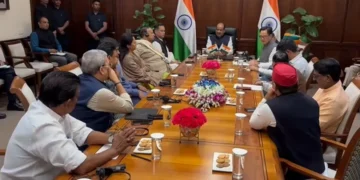Table of Contents
ToggleEVM-VVPAT case: A bench of Justices Sanjiv Khanna and Dipankar Datta delivered two concurring verdicts and dismissed all pleas in the matter.

The Supreme Court on Friday, April 26, rejected pleas seeking 100% cross-verification of votes cast using EVMs with a Voter Verifiable Paper Audit Trail (VVPAT) and said “blindly distrusting” any aspect of the system can breed unwarranted scepticism.
A bench of Justices Sanjiv Khanna and Dipankar Datta delivered two concurring verdicts. It dismissed all the pleas in the matter, including those seeking to go back to ballot papers in elections.


An EVM comprises three units – the ballot unit, the control unit and the VVPAT. All three are embedded with microcontrollers with a burnt memory from the manufacturer. Currently, VVPATs are used in five booths per assembly constituency.
EVM VVPAT CASE VARIFICATION: Supreme Court issues two directives
- Justice Khanna directed the Election Commission of India to seal and store units used to load symbols for 45 days after the symbols have been loaded to electronic voting machines in strong rooms.
- The Supreme Court also allowed engineers of the EVM manufacturers to verify the microcontroller of the machines after the declaration of the results at the request of candidates who stood second and third. The top court said the request for the verification of the microcontroller can be made within seven days of the declaration of the results after payment of fees.

SUPRIME COURT OF INDIA The Supreme Court today rejected petitions seeking 100% verification of votes cast on Electronic Voting Machines with paper slips generated through the VVPAT method. The two-judge bench of Justice Sanjiv Khanna and Justice Dipankar Datta delivered concurrent but separate .
The court further said that the burnt memory semicontroller in 5% of the EVMs that is the Control Unit, Ballot Unit and the VVPAT per assembly constituency per parliamentary constituency shall be checked and verified by a team of engineers from the manufacturers of the EVM after the announcement of results. This check will be carried out on a written request by candidates 2 and 3. Such a request is to be made within 7 days of the declaration of the results. The cost will be borne by the candidate making the request and expenses must be refunded if the EVMs are found to be tampered
The bunch of petitions before the court had sought a direction to cross-verify every vote cast on EVMs with paper slips generated by the VVPAT system. Currently, this cross-verification is done for five randomly selected EVMs in every Assembly constituency.
The Supreme Court, however, passed two directions for the Election Commission. The court said that after symbols are loaded into an EVM, the symbol loading unit should be sealed and secured in containers. The candidates and their representatives shall sign the seal. The sealed containers containing the SLUs shall be kept in the storerooms along with the EVMs at least for 45 days after the declaration of results, the court said.
- The Supreme Court had earlier said it is not the controlling authority for elections and cannot dictate the functioning of the Election Commission, a constitutional authority. It had also wondered if it can act on mere suspicion.

ADVOCATE PRASHANT BHUSHAN Responding to concerns raised by Advocate Prashant Bhushan, appearing for petitioner Association for Democratic Reforms, the court said in the last hearing, “If you are predisposed about a thought-process, then we cannot help you… we are not here to change your thought process.”In the earlier hearings, the petitioners raised the issue of public trust and drew comparisons with European countries that have gone back to the ballot voting system. The court shot down such comparisons, observing that the challenges here are different. The Election Commission, on its part, stressed that the current system is foolproof.
- An EVM has a control unit and a balloting unit. These are connected by a cable. These are also connected with a VVPAT — Voter Verified Paper Audit Trail — machine. This machine enables a voter to see if the vote was cast properly and went to the candidate he/she supports
Who filed the petitions?
- NGO Association for Democratic Reforms, one of the petitioners, had sought to reverse the poll panel’s 2017 decision to replace the transparent glass on VVPAT machines with an opaque glass through which a voter can see the slip only when the light is on for seven seconds.
The petitioners have also sought the court’s direction to revert to the old system of ballot papers






































Thanks for sharing. I read many of your blog posts, cool, your blog is very good.